There is no excerpt because this is a protected post.

1950 Bathurst Street, Toronto, ON, M5P 3K9
(416) 789-3291
[email protected]
Emergency Funeral Contact
Cell: 416-565-7561
There is no excerpt because this is a protected post.
By Anne Dublin
From the time I was twelve years old and taught myself to knit from a book, I’ve been an avid knitter. Over the years, I’ve knitted sweaters, toques, scarves, and mittens for family and friends. Nothing fancy, mind you—I use mostly basic stitches like knit and purl. Knitting is one of my favourite pastimes as I watch TV in the evening after a busy day. Even if I’m watching a less-than-wonderful show, I can at least feel that I’m doing something productive. I also love the meditative feeling I sometimes get by knitting row after row of knit and purl.
So, how did I begin knitting baby sweaters for Temple? A number of years ago, during a break in choir practice, I was chatting with the late/great Matilda Bigio. Z”L She told me how she was knitting sweaters for our new babies and how Sisterhood needed more knitters. She assured me that the pattern she used was “easy”. I decided to give it a go and haven’t looked back since!
One of my greatest joys is to attend a Shabbat service that includes a baby naming. When that shiny gift bag containing a baby sweater is opened by the new parents, I “kvell” inside to know that the sweater I knit will give warmth and comfort to our newest Little Blossom.
If you’d like to join me on this “knitting journey”, or even if you have balls of wool you’d like to donate, please contact Lindsay Mockler at [email protected]. More knitters are always welcome!
by Gillian Rosenberg
Communications Coordinator for Women of Holy Blossom (WHB)
WHB representative to the Northeast District of Women of Reform Judaism
In an effort to live up to our branding around diversity and inclusivity, WHB is deepening its understanding of the nature of spaces in which we interact. We have been using the term safe spaces to describe what is desirable. This term was traditionally used by 2SLGBTQ+ communities and characterized in the negative as being without bias, conflict, criticism, or threat. The term is now challenged on the premise that safety is a personal perspective or perception related to one’s own situation, both unique to a space and in regard to what participants carry with them into that space. The latter might include, for example, past trauma, pain, insecurities, differing comfort levels, burdens, and physical or cognitive challenges. Despite best efforts to anticipate the needs of others, we cannot control how they will actually feel in a space, and if they will, in fact, feel safe.
Brave spaces is suggested as an alternative term. But I think it suffers the same problem. We cannot ensure that someone will feel brave any more than we can ensure they will feel safe.
Words matter, but sometimes they risk obfuscating or distracting from the intention behind them. I think this is the case now. Therefore, instead of investing time and energy trying to articulate the right word to describe our desired spaces, only to find it is inadequate, let’s go back to basics.
What is our actual goal? Twofold: 1) that everyone in our spaces feels welcomed, comfortable, seen, celebrated, safe, and brave; 2) that everyone in our spaces works to ensure this is the case for everyone else. It is two sides of the same coin, aimed at avoiding harm and preserving dignity for all.
Based on this goal, we can reframe how we think about spaces as a shared responsibility, co-created on a foundation of pro-social and moral values, such as listening, kindness, patience, respect, fairness, honesty, generosity, and compassion. This must be negotiated and managed, in concrete terms, both in anticipation and in the moment, with every new composition of participants. What does kindness look like in our sessions, events, programs? What would be an example of someone being kind? How do we recognize when someone is in need of kindness? Ditto for the other values. Answers to these questions are less straightforward and more nuanced than one might think. Consider the inverse. Many micro-aggressions are deeply hurtful but go unnoticed by aggressors and bystanders, who may think of themselves as kind.
At the recent North American Conference for Women of Reform Judaism, the women’s affiliate of the Union for Reform Judaism, the opening ceremony included a concrete ethics statement outlining how we were to treat each other and what we could expect from others in how we are treated. An open invitation was offered to anyone wanting to discuss this further. I wish I had taken notes.
Here is a statement from the conference registration package, to give you an idea:
Women of Reform Judaism strives to create an environment of kavod (honor and respect), demonstrating regard for one another in the spirit of b’tzelim Elohim (being created in God’s image). To this end, WRJ seeks to create communities of mutual respect, physical and emotional safety, and fundamental decency, valuing equally all individuals in its sphere. We value the importance of dibbur (honest and thoughtful speech,) sh’tikah (listening silently to understand), and savlanut (patience).
It is difficult, maybe impossible, to capture the comprehensiveness of this deeply Jewish and humane statement in a single word. And WHB does not wish to engage in such an academic exercise. Rather, we are interested in what this looks like in practice and how it is realized in action. So, stay tuned as we follow the exemplary lead of WRJ and continue to work on living up to our branding.
If you would like to help, please email us at [email protected].

1950 Bathurst Street, Toronto, ON, M5P 3K9
(416) 789-3291
[email protected]
Emergency Funeral Contact
Cell: 416-565-7561
